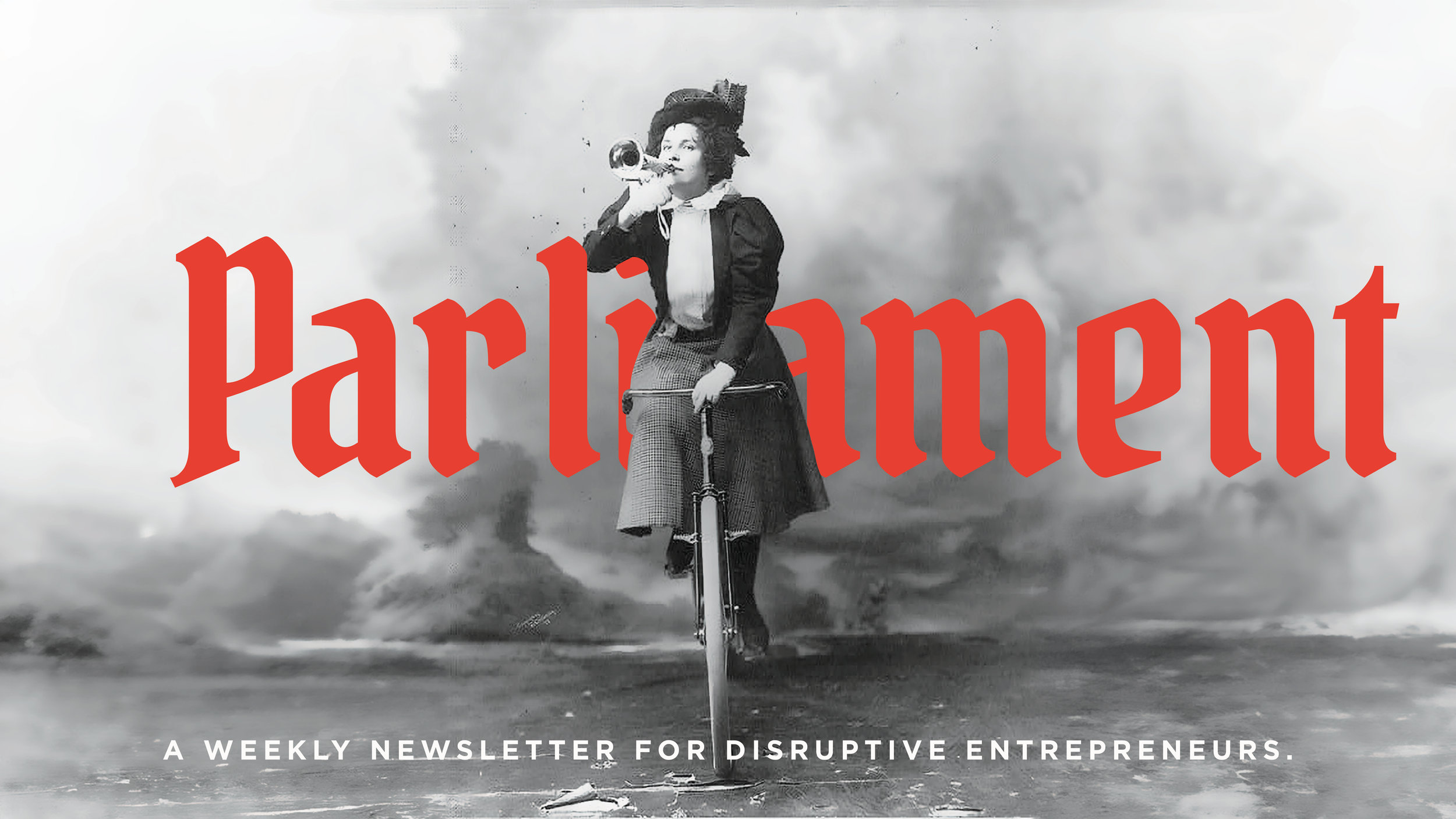Parliament | The Founder Effect
Supercharging Your Brand Without Becoming It
Let's talk about something that's been on our minds lately: the founder brand ecosystem. We've been noticing a pattern with our clients who are killing it in their industries, and it has everything to do with how they're leveraging their founders as brand assets—without letting the founders become the entire brand.
A Brand With a Founder Gives Your Marketing Superpowers
Here's the truth bomb: when a brand effectively incorporates its founder's story, voice, and vision, marketing efforts gain an authenticity superpower that's nearly impossible to manufacture. But notice our phrasing here: it's not "a founder with a brand" but "a brand with a founder."
The distinction is crucial. Your brand should encompass the founder as one vital ecosystem component—not the other way around.
The Kardashian Exception (and why it probably doesn’t apply to you)
Unless you're a Kardashian (and let's be real, if you're reading this, you probably aren't), the founder cannot and should not carry a brand exclusively. The Kardashian model is an outlier, not a blueprint.
For most businesses, tying the brand too tightly to the founder creates two significant risks:
The Scale Ceiling: When your brand becomes synonymous with your founder, scaling becomes exponentially harder. Your growth becomes limited by one person's time, energy, and personal brand.
The Exit Roadblock: Planning an eventual exit? A founder-dependent brand dramatically reduces your options and potentially your valuation. Buyers want businesses, not people.
The Naming Paradox
This brings us to a piece of advice we share with nearly every founder: think twice before naming your company after yourself. (Again, unless you're a Kardashian—they seem to be the exception to every rule.)
Why? Because:
It blurs the line between personal identity and business entity
It makes it harder to evolve beyond the founder's personal brand
It can complicate succession planning or exits
It limits your ability to pivot if needed
Finding The Balance: The Founder As Brand Asset
So how do you harness the founder effect without falling into its traps? Here's our framework:
1. The Founder as Origin Story
Your founder's journey, values, and vision should inform your brand story, but not become the entire narrative. Think of it as the opening chapter, not the whole book.
2. The Founder as Voice, Not Face
Your founder's unique perspective can shape your brand voice without requiring their face on every piece of marketing material. This creates consistency that can scale beyond one person.
3. The Founder as Visionary, Not Operator
Position your founder as the vision-setter, allowing the brand to showcase its team, processes, and systems that bring that vision to life.
4. The Founder as Value-Creator, Not Value
The founder creates and embodies the brand's values, but the values themselves transcend any individual and become embedded in the organization's culture.
The Takeaway
The brand should have a founder effect, not a founder dependency.
The sweet spot is creating a brand ecosystem where the founder serves as a powerful catalyst and ongoing inspiration—but where the brand itself has its own distinct identity that can thrive even when the founder isn't in the room.
Remember: The founder plants the seed, but the brand grows the forest.
What's your take? How are you balancing the founder effect in your own brand ecosystem? We'd love to hear from you.
P.S. If you're struggling with finding this balance in your own brand, let's talk. Our Brand Being Method™ is specifically designed to help you build a brand that leverages your founder's strengths while creating something bigger than any one person.
Artwork by Nya McClain, article by Senior Art Director, Bri Thomas
Consistency Doesn't Mean Boring: Why brand consistency is about intention, not limitation
The Persistent Myth
"We need to be more creative, let's break away from the brand guidelines." "Brand consistency is holding us back." "Our guidelines are too restrictive for social media." "We need something fresh - let's ignore the system just this once."
These are the justifications used every time someone wants to prioritize short-term creative impulses over long-term brand building. But here's the thing: consistency isn't your enemy - it's your secret weapon.
The Reality Check
The most innovative brands in the world are also some of the most consistent. Think about:
Apple's product launches - always minimal, always powerful
Nike's advertising - decades of "Just Do It" finding fresh expressions
Coca-Cola - evolving within their brand world for over a century
Google - playful while maintaining clear system principles
These brands aren't consistent because they lack creativity. They're consistent because they understand that consistency creates recognition, and recognition builds trust.
The Freedom of Framework
Strong brand systems work like music – they're built on a fundamental structure that enables meaningful improvisation, not restricts it. Think of your brand guidelines as a musical scale: once you truly understand the rules, you can play with them in infinite ways while still creating something recognizable. The structure isn't limiting your creativity; it's giving it direction and purpose. When you have a clear framework, you don't waste energy wondering if something is "on brand" – instead, you can focus your creative energy on finding fresh, innovative ways to express your brand's core truth.
The best brand systems don't wall you in; they give you a foundation to build upon. They provide the tools and principles that enable teams to move quickly and confidently, ensuring that every expression of the brand adds to its equity rather than diluting it. It's about creating guardrails that focus innovation rather than barriers that prevent it.
What Actually Matters
Real brand consistency isn't about mindless repetition or rigid rule-following – it's about strategic intention and purposeful choice. It's understanding that every brand expression is either building or eroding brand equity, and making conscious decisions about how to move forward. True consistency comes from having a deep understanding of your brand's core principles and using that understanding to guide evolution, not prevent it.
This means looking beyond surface-level consistency like colors and logos to ensure you're creating coherent experiences that build meaningful recognition over time. It's about understanding that your brand isn't just a set of visual rules – it's a tool for creating lasting impressions and building trust with your audience. When you approach consistency from this perspective, it becomes less about what you can't do and more about how you can use your brand's established equity to create more powerful work.
The Bottom Line
Remember: The most powerful creative work doesn't come from ignoring your brand - it comes from understanding it deeply enough to push it forward with purpose.


